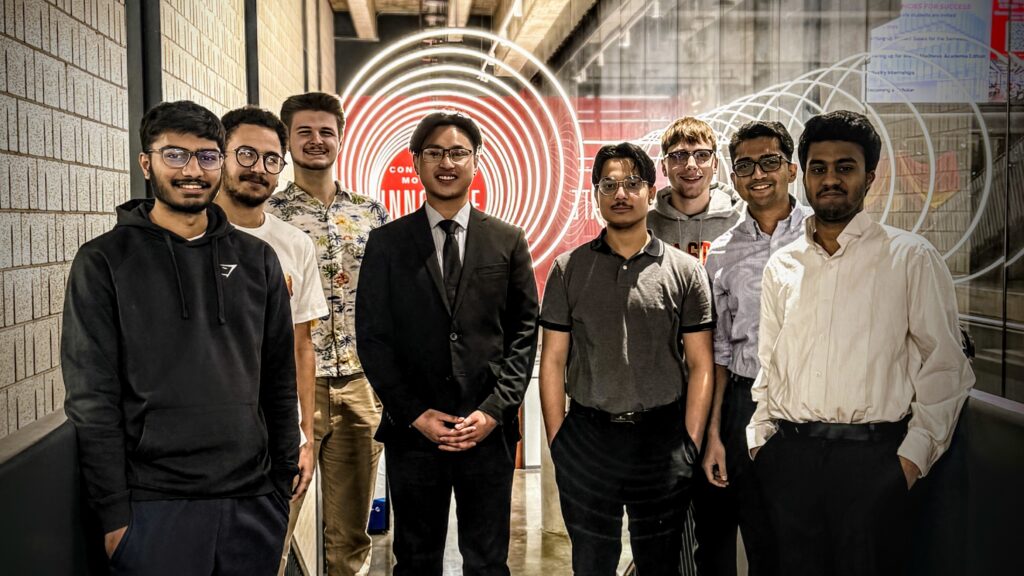PROJECT MISSION
HAZ-I (haze-eye) is focused on designing and developing an affordable and adaptable Augmented Reality (AR) Heads-Up Display (HUD) system for astronaut helmets. The team aims to enhance situational awareness, safety, and operational efficiency in space exploration. By integrating real-time sensor data and interactive controls, HAZ-I aims to provide astronauts with seamless access to mission-critical information without distraction. Beyond aerospace, HAZ-I’s vision is to expand this technology into other high-risk industries, such as firefighting, medicine, and industrial safety, making AR-based HUD systems more accessible, cost-effective, and versatile for professionals who rely on real-time data visualization in demanding environments. Their motto best encapsulates this mission – “HAZ-I: See beyond limits.”

Project Goals
HAZ-I’s primary objective is to have a fully functional prototype ready by the end of the semester, capable of projecting real-time mission data inside the astronaut helmet.
To efficiently manage the workload, HAZ-I members structured the team into two specialized groups working simultaneously:
Hardware Team: This team is responsible for designing the helmet structure and integrating essential sensors into the system. They are utilizing a Raspberry Pi as the processing unit to interface with three critical sensors:
o Temperature sensor
o Humidity sensor
o Ammonia detection sensor
The helmet itself will be 3D printed using PLA, with Polycarbonate or Plexiglass for the visor to ensure durability and clarity.
Optics Team: The focus of this team is on developing the projection system and designing the fixture for the projector within the helmet. They are leveraging advanced optical simulation software like Code V and COMSOL to optimize the projector and lens configuration for maximum clarity and efficiency.
Project Deliverables
Research and Development:
– Conduct in-depth research on the feasibility of integrating AR HUDs into astronaut helmets
– Explore the advantages and limitations of both the microprojector and waveguide approaches
– Optimize sensor integration and power management
– Prepare and finalize the draft of the CAD model for the helmet
Creation of Two Working Prototypes:
– Develop and assemble two functional helmet prototypes—one utilizing a microprojector system and the other based on waveguide technology
– Ensure both models can effectively project relevant mission data within the helmet’s visor
Testing and Analysis:
– Conduct rigorous testing to evaluate sensor functionality, projection quality, and real-time data integration
– Analyze and compare the performance of both projection models to determine the most viable solution
– Document findings and improvements to refine future iterations of the designConduct rigorous testing to evaluate sensor functionality, projection quality, and real-time data integration
– Analyze and compare the performance of both projection models to determine the most viable solution
– Document findings and improvements to refine future iterations of the design
Next Steps
By the end of the semester, the HAZ-I team aims to have a working prototype that successfully integrates both sensor data and visual projection within the helmet.
